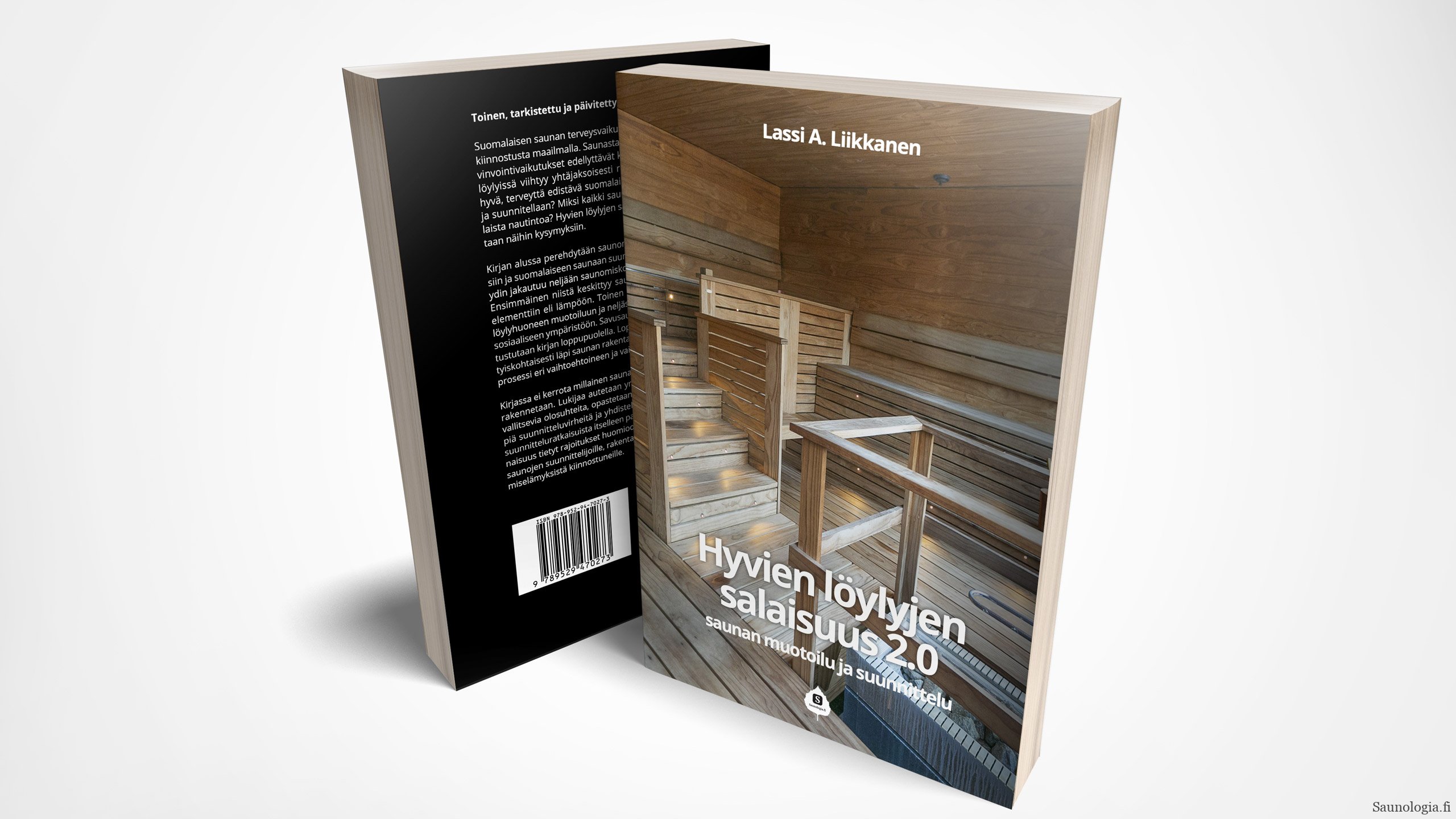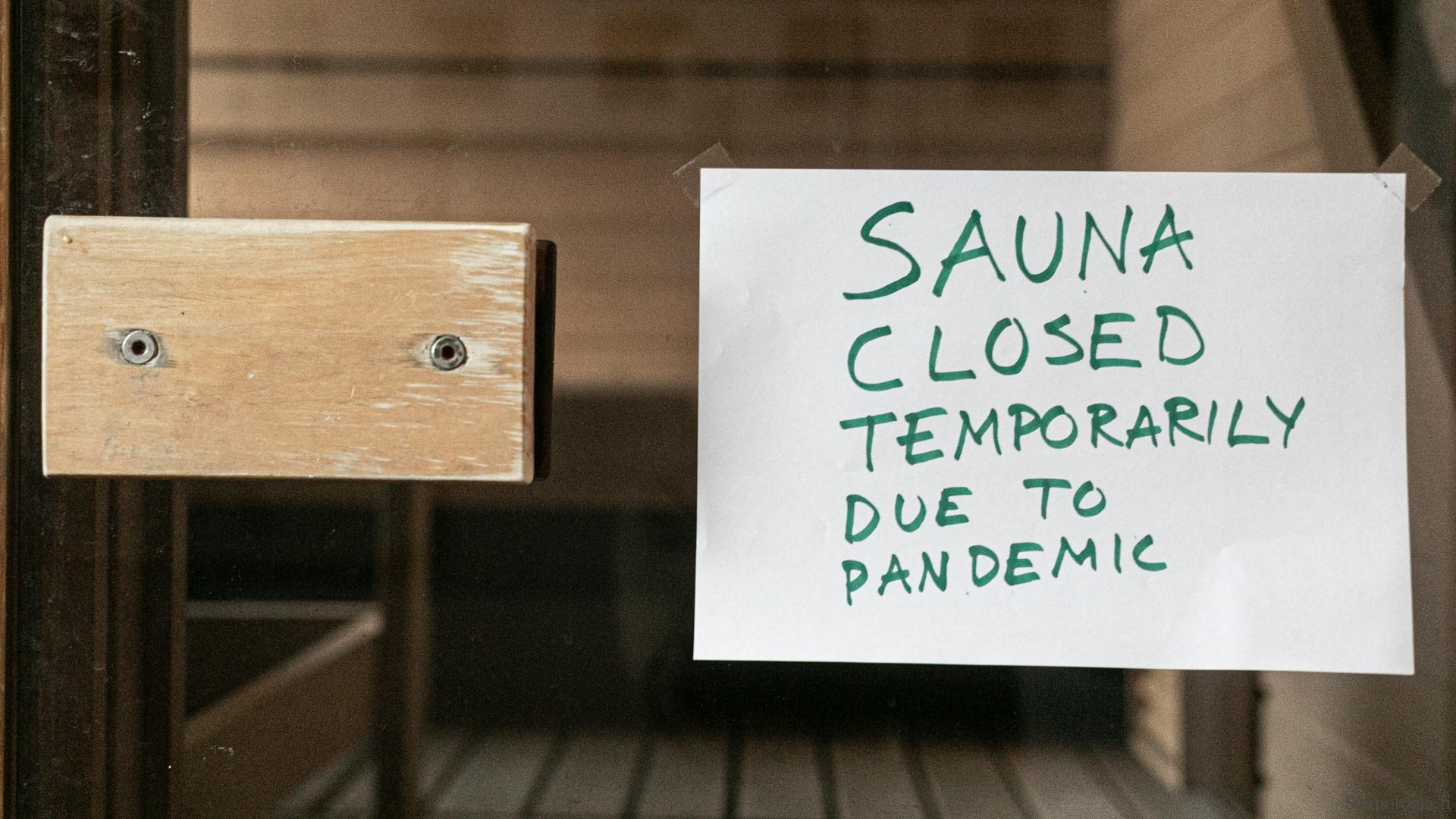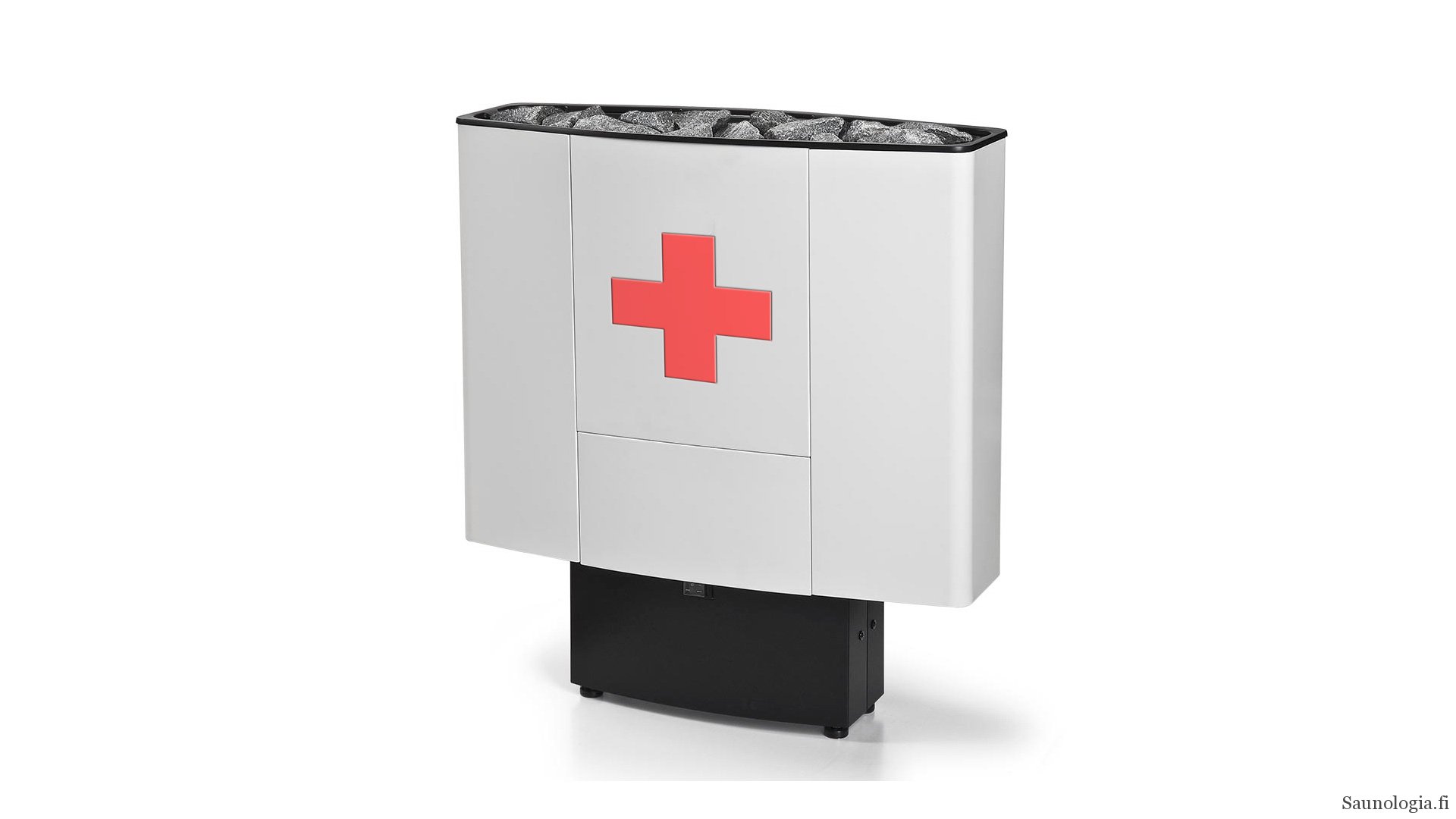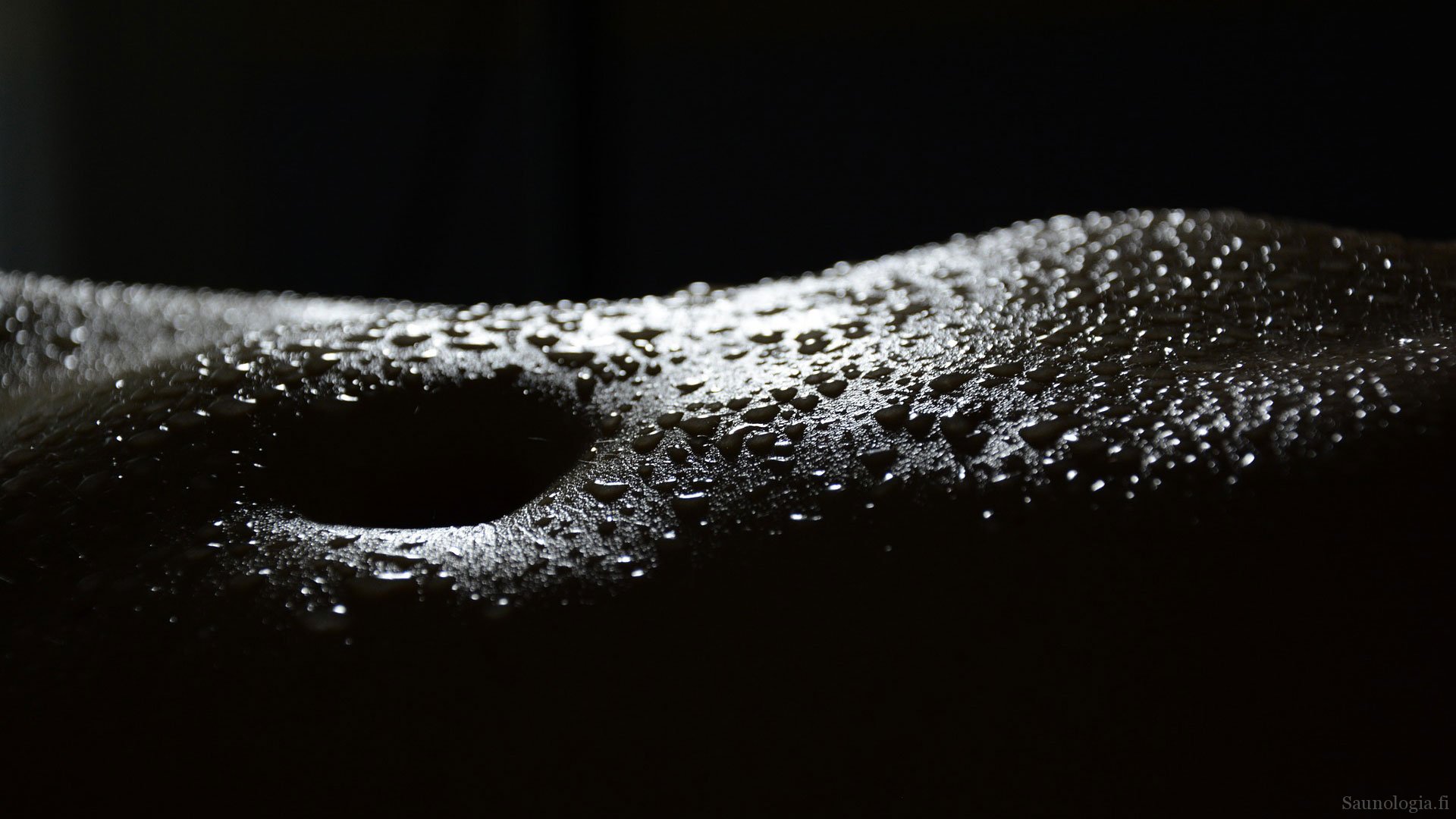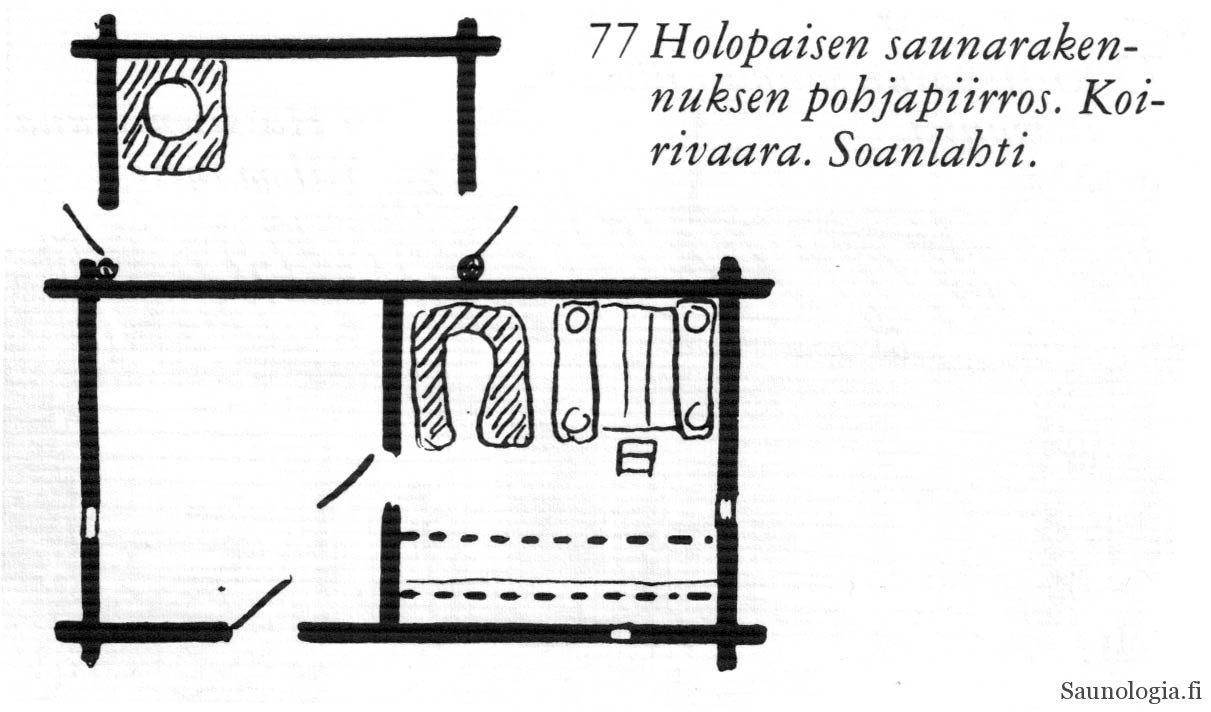How Carbon Dioxide Affects Sauna Air Quality
Carbon dioxide can build up surprisingly fast in a sauna environment despite its high tendency to diffuse. Saunologia’s first international sauna guest Walker Angell describes his findings of a years-long exploration of CO2. He presents fascinating data on how ventilation changes radically altered CO2 concentration at his home sauna. From Saunologist’s perspective, Walker’s data lends strong support to a hypothesis I’ve pondered for years that carbon dioxide is the main nemesis of good sauna air, and its behavior is subject to stratification in the short-term we experience in practical sauna.
“The human body is designed to discharge 70% of its toxins through breathing … If your breathing is not operating at peak efficiency, you are not ridding yourself of toxins properly.”
– Gay Hendricks, PhD
When we talk about ventilation for a sauna it has very little or nothing really to do with oxygen – O2. There’s a huge abundance of oxygen in the air. The primary purpose of sauna ventilation is removing airborne stuff we don’t want to breathe. This is primarily the carbon dioxide, CO2 that we all exhale.
In a small space like a sauna we are quite literally breathing each other’s exhaust. We want to reduce that as much as possible.
CO2 is a waste product of our bodies. Our muscles, brain and other bits produce CO2 as a byproduct of normal metabolic functioning. This waste CO2 is then carried in our blood to our lungs where, through the pressure equalization of gas exchange, it becomes airborne and is exhaled.
This Gas Called CO2
CO2 is a key element of the carbon cycle which is a quite amazing design. Fungi and animals produce CO2 as part of metabolism/respiration, plants use the carbon in CO2 to grow and produce the O2 that we animals and fungi need to function. Within this, our body utilizes O2 and food such as glucose to produce energy with the CO2 that plants need as the byproduct. So plants make O2 that we inhale to provide fuel to our muscles that then produce CO2 that we exhale to provide food for plants.
The amount of CO2 in the air around us has increased significantly over the past 70 years. This has been found in repeated measurements from Mauna Loa in Hawaii started by Dr. Keeling in 1958 visualized in the associated figure.

By Oeneis – Own work. Data from Dr. Pieter Tans, NOAA/ESRL and Dr. Ralph Keeling, Scripps Institution of Oceanography., CC BY-SA 4.0,
CO2 has a very high diffusion coefficient – it spreads out in a space very quickly. This is good. If you and I are standing in an airport concourse talking there will be a little bit of extra CO2 concentration around us but it’s also quickly diffusing into the larger space so that it never gets too concentrated.
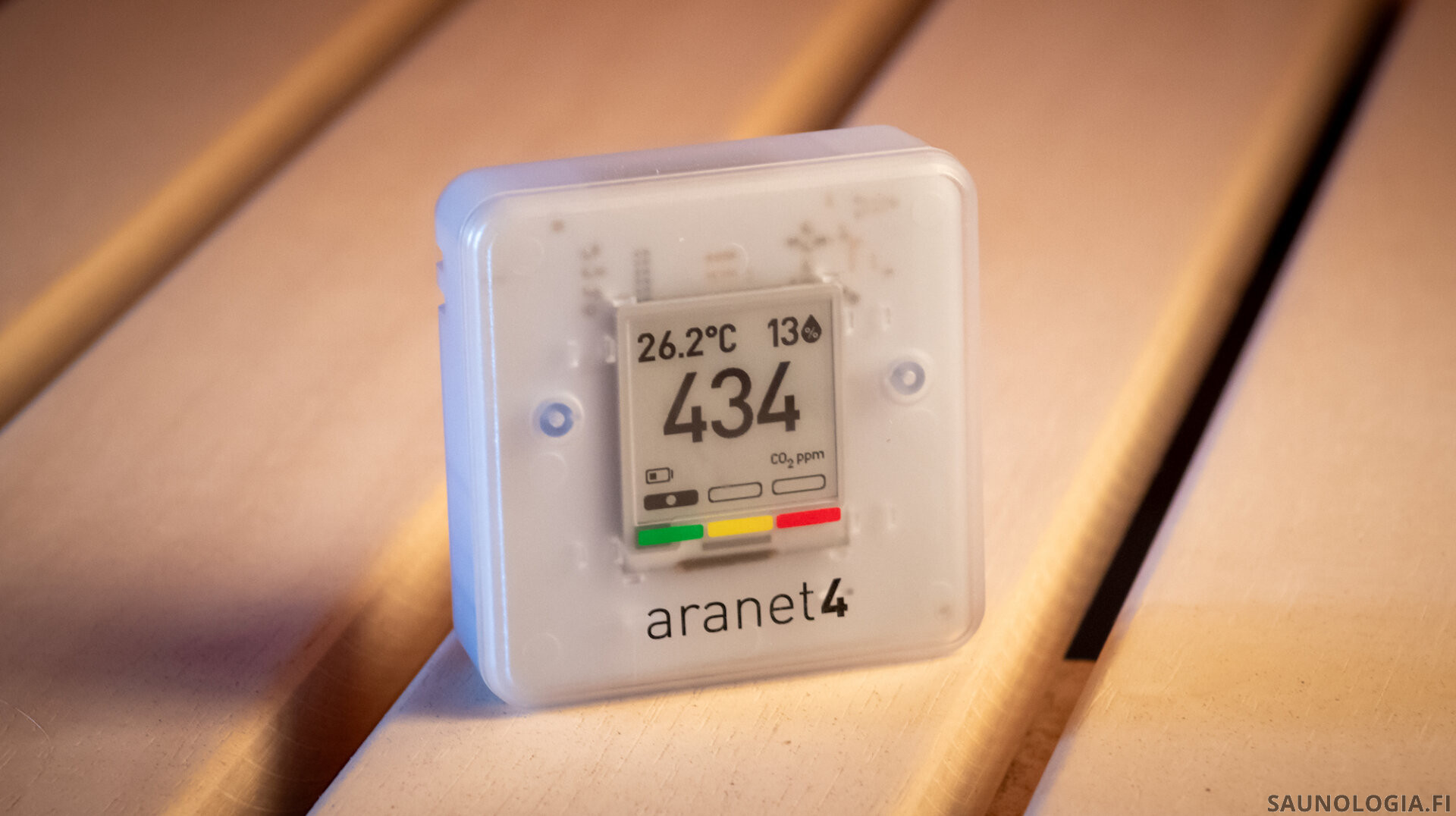
CO2 is also quite amazingly penetrative. I frequently carry an Aranet4 with me. Aranet4 is a portable air quality monitor that measures CO2 level, temperature, relative humidity and atmospheric pressure. Regardless of which pocket I put it in; jeans, inner pocket of a heavy tweed jacket, insulated pocket of a winter coat, it provides quite accurate readings. I carried two for a while, one in a pocket and one in my hand, and the readings were surprisingly similar. This is why simple filters, even HEPA, are ineffective with CO2 – it passes right through.
How does CO2 in the air we breathe affect us?
Imagine you start with 4 marbles in your lungs representing the CO2 of inhaled air (e.g.., ambient air). Your blood has 50 marbles and would like to get rid of about half of them. It begins giving marbles to your lungs until they’ve equalized which will be 27 marbles each. Your blood has been able to get rid of 23 marbles and is happy with that.
Now imagine you start with 8 marbles inhaled. Equal is now 29 each (50+8 = 58, 58/2=29) so your blood was only able to offload 21 leaving it with 29. Your body isn’t as happy with this but can deal with the higher level for a short period of time.
What if you start with 26 marbles in your lungs? 50+26 = 76. Half of 76 is 38. Now your blood is only able to get rid of 12 marbles and 38 remain. That’s a long way from the 25 it’d like to be left with. Knowing that our brain, muscles and other organs are continuing to produce CO2 our brain knows our system will soon be overloaded so it tells them to slow down and not work as hard so they won’t produce so many waste marbles.
When CO2 in the ambient air we’re breathing in is above normal, ≈420 parts per million (ppm), then our body can’t get rid of as much as it needs to. Our body can handle a little bit extra over for a short period of time but higher amounts or longer periods require our body to reduce functionality. Our brain, muscles and other bits have to do less so that they produce less CO2. Doing less means slower muscle recovery, headaches, nausea or slowed thinking.
Our bodies are designed to work in a certain way and want to always maintain homeostasis. When parameters are violated, such as too high of blood CO2, it responds, signaling our brain that something is wrong and needs to be corrected.
[Images of our circulatory system typically show arteries carrying fresh oxygenated blood as red and veins carrying CO2 waste back to our heart as blue. This is simply to help distinguish them in the image – in reality all of our blood is always red. ]
Some Effects Of CO2
Too high of blood CO2 level is called hypercapnia or hypercarbia. Effects can vary considerably by individual. Someone with a very efficient respiratory system such as an astronaut may not be affected much by even very high concentrations while most of us more average people can be affected by just slightly elevated levels.
High CO2 can make us feel fatigued or drowsy rather than energized, this generally or particularly after our sauna.
A bit of fun with contradictions: An evening sauna with good fresh air will leave us feeling energized after the sauna and we’ll then sleep better that night. An evening sauna with poor air quality will leave us feeling drowsy after the sauna but we’ll often sleep worse that night. The same happens with high CO2 levels in our bedroom at night – lower CO2 equals less drowsy and better sleep, higher results in a more drowsy feeling but worse sleep.
I’ve been told that if you feel dizzy in or after a sauna that it is very likely from too high of CO2 rather than heat. While heat stress can cause dizziness, it is more likely from high blood CO2.
A mild headache is common for some people.
Our cognitive ability can decline. We can’t think as quickly nor as clearly – we have brain fog. In one study, being exposed to a CO2 levels of 1400-1600 ppm for 2.5 hours resulted in about a 50% decline in strategic thinking ability.
Students in a classroom are able to pay better attention and learn better if CO2 levels are lower while higher levels result in impaired attention. Increased ventilation rates have also been associated with decreased illness and absenteeism.
Our motor ability is similarly affected. At very high levels we can find it difficult to thread a needle for instance.
Muscle recovery will be slower or possibly worsened. This is complicated though. If we are in a sauna, even one with higher CO2 levels, for 15 minutes and then go outside in to air with normal 420ppm CO2 for a cold plunge, we should still, I think, see the benefits of contrast therapy.
Similarly, working out in a gym with poor air quality and high CO2 levels is likely to result in lessor gains per amount of work. 3 sets of 5 deadlifts will likely be more beneficial in a gym with a CO2 level of 550 than in one with a CO2 level of 1200. Similarly, we may find that we are more limited in how many reps we can do when CO2 levels are higher.
Finally and specific to sauna, the first effect from too high of CO2 levels we might notice is one that we don’t necessarily notice as CO2 – we feel like it’s time to leave the sauna. We think it’s the heat but it’s actually our body beginning to suffocate a tiny bit. We might feel the need to leave after perhaps 11 minutes (instead of 16 if CO2 were at a healthier level). Sometimes this comes with noticeable shortness of breath or difficulty breathing but not always.
So, maintaining healthy CO2 levels is important. In our homes the best option is usually to simply open some windows. In less temperate environments or if outdoor air is heavily polluted a mechanical ventilation system such as an air exchanger is a good idea.
Note I: The heat of a sauna places considerable stress on our body that we don’t have in a normal temperate environment so the additional stress of high blood CO2 may be somewhat multiplied.
Note II: My understanding is that levels below about 7000 ppm will not result in any permanent damage and exposure to somewhat higher levels is unlikely to. Most of the effects we’re talking about here are likely temporary.
Note III: We know that, similar to heat, women are more sensitive to CO2 levels than men and will usually feel the effects at lower concentrations. Women have less lung and blood capacity per kilogram of body weight and while men’s respiratory system responds to systemic stress with deeper breaths, women respond first with faster breathing. My wife is more likely to notice stuffier air in a sauna than I.
CO2 as the Air Quality Indicator Gas
CO2 is a good indicator gas and can act as a proxy for other contaminants in the air around us. If CO2 levels in a space are high that’s an indicator of poor ventilation. In most cases then, not only is CO2 high but other airborne things as well including particulate matter, VOCs and pathogens.
About 11 years ago a small group of us from 5 different countries began carrying CO2 sensors with us to get an idea of ventilation in various spaces (it wasn’t good). If you’ve ever wondered why you don’t feel good after a commercial air flight, high CO2 is a critical element of that.
The Pandemic heightened interest in this as how goes CO2 likely goes airborne pathogens like Covid virus. If you ventilate a restaurant enough to maintain a CO2 level of about 550-700 ppm or below, then you’re likely also keeping any pathogens at a relatively safe level. The guy at the table next to you may be breathing out Covid germs but if the ventilation system is exhausting them and replacing that Covid laden air with cleaner air from outside then you are less likely to get infected.
If CO2 concentrations are higher then so likely are any pathogens. The higher the CO2 the greater the risk of exposure to any covid bits floating in the air. I don’t think any of our group would stay in a restaurant that was above about 1800 ppm.
Unlike CO2, pathogens like Covid can be filtered. Commercial airplanes do a quite good job of filtering the air, including pathogens such as Covid, but only a moderately good job maintaining healthy CO2 levels. This is one place where slightly higher CO2 levels may not indicate too increased risk for Covid.
CO2 In A Sauna
The more volume per person a sauna has, the less negative effects from CO2 (and other stuff like pathogens). If you have twice the volume per person then CO2 (and pathogen) levels will rise about half as fast. If you have half the volume per person then they will rise twice as fast.
Even with good ventilation this makes a noticeable difference.
Ventilation airflow is also more comfortable in a larger space. 38 L/s (80 CFM) for four people in a 14 m³ sauna is less noticeable and more comfortable than the same 38 L/s in an 8 m³ sauna for four people.
In our sauna, with either no ventilation or natural convection ventilation, CO2 hangs around in the upper area, where our heads are, somewhat effectively. Some diffuses or spreads to the lower levels but a lot seems to stay entrained in the convective loop. A CO2 meter below our foot bench where temps are safe for the meter will show about 20% less increase than one up at head height measured with a CO2 meter that’s accurate at higher temps. There are two surprises with this; how large a difference there is between vertical levels in the same room, and that the difference is so similar for no ventilation and natural convection.
With Mechanical Downdraft ventilation a CO2 sensor placed lower down seems to provide fairly accurate measurements. This I think because CO2 levels are kept much lower to begin with along with better air mixing.
Mechanical Downdraft Ventilation: Mechanical Downdraft Ventilation brings fresh air in higher, typically over the heater, and exhausts air from lower down, typically under the benches on the opposite side from the heater. The exhaust utilizes a mechanical blower to effect this since it is going against the normal flow of air.
To maintain good air quality we want about 9-12 L/s (20-25 CFM) of air exchange ventilation per person. This is largely regardless of how large the sauna is. However, maintaining a minimum of about six changes per hour in addition is still good practice, particularly for larger saunas.
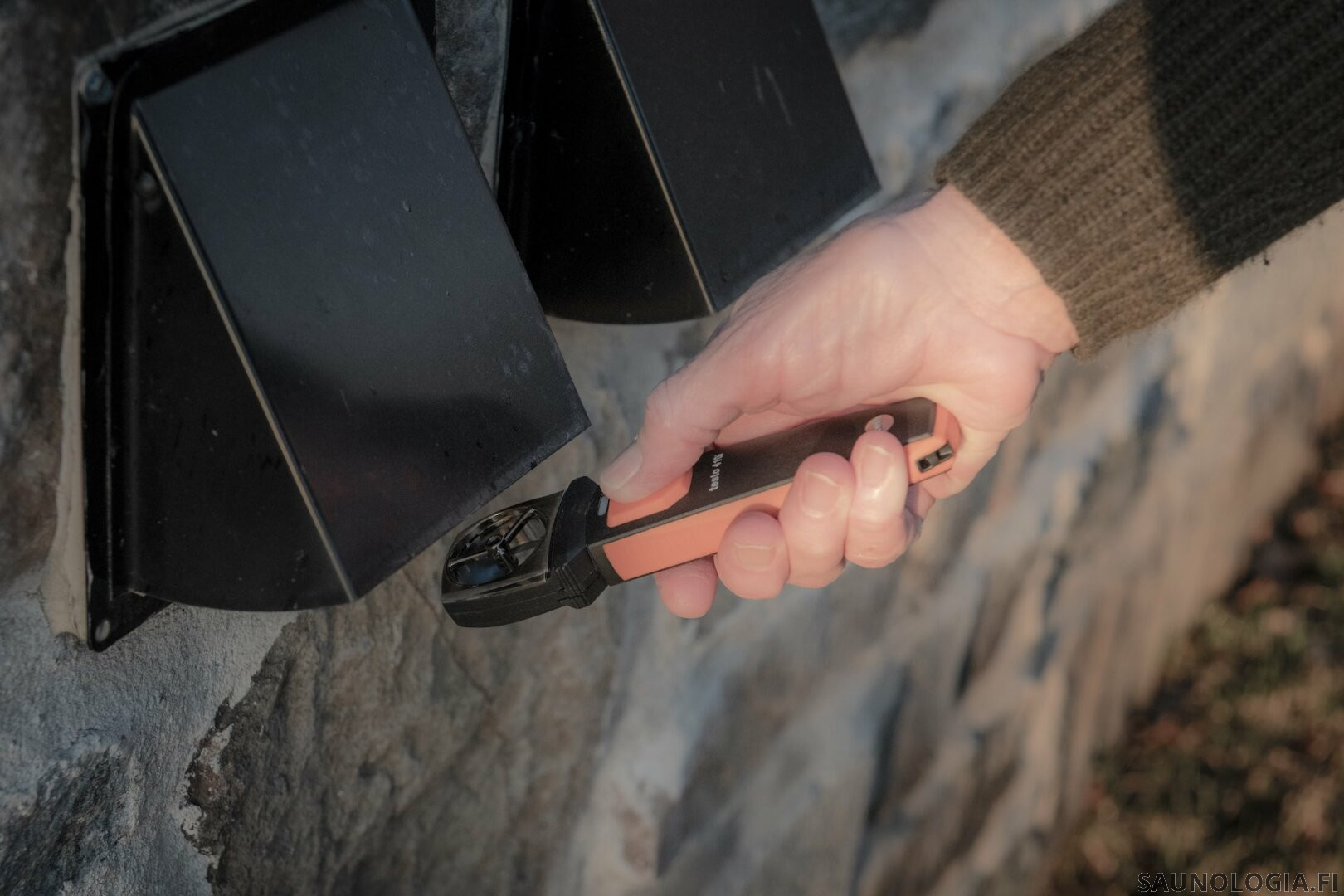
Some people will say that they don’t need ventilation in their sauna because air is refreshed each time the door is opened. There’s some truth to this, but not enough.
Heat somewhat follows CO2. If you don’t lose much heat when the door is opened, you don’t lose much CO2. Thanks to being highly diffusive, opening a door will often result in a quick drop of perhaps 10-30% but from there it often declines at about the same rate as temperature.
So, if you want healthy CO2 with this setup then you need to leave the door open until most of the heat has been let out. The air can get fresh, but the sauna will get cold.
Some CO2 Example Measurements
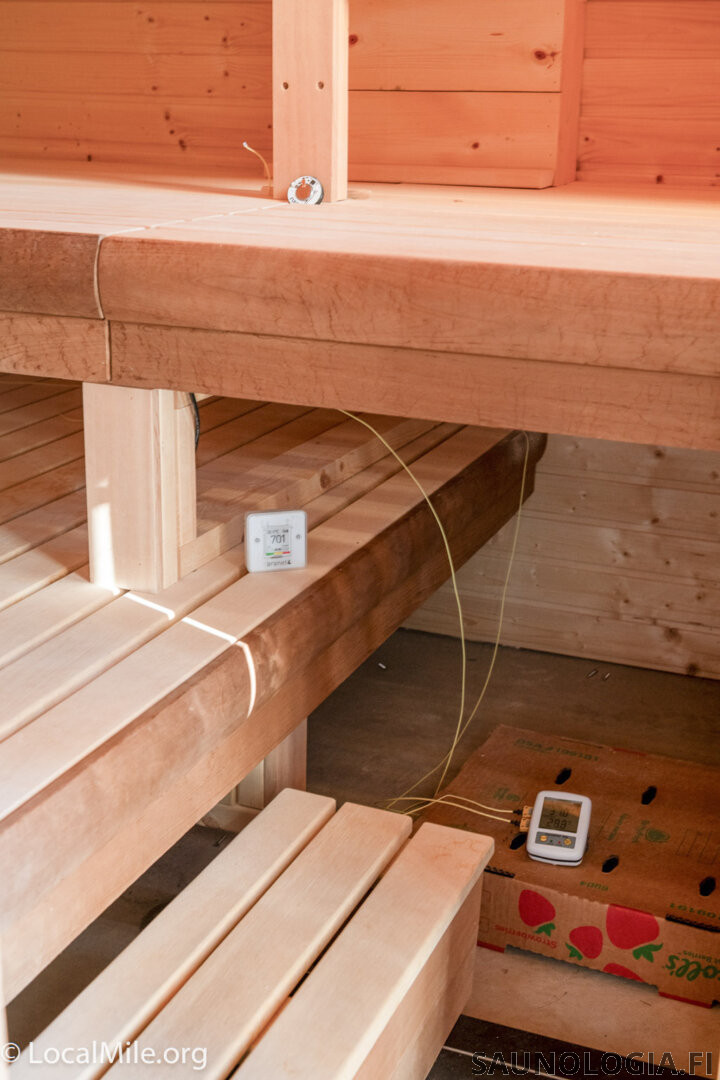
No Ventilation: In our 6-person sauna (≈14 m³) with just me doing two rounds. An Aranet4 was placed on the platform that is midway between the floor and foot bench (46cm (18”) below the foot bench and 48cm (19”) above the floor). You can see the CO2 rise when I entered and then decline after I exited each time.
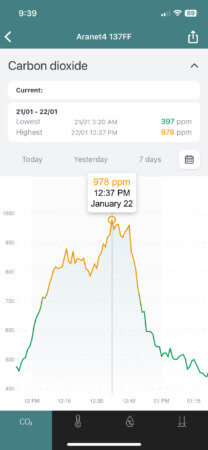
Actual CO2 at my head was likely closer to ≈1100ppm (20% higher). The air was noticeably stuffier but for the ≈12-15 minute rounds I was doing it wasn’t a major issue.
We can calculate approximately what CO2 levels would be with multiple people: Subtract the base CO2 level of ≈440ppm from 1100 to get 660ppm increase over base for one person. So for three people we’d have 440 + (3*660) = 2690ppm. That high a level would be noticable and uncomfortable.
Mechanical Downdraft Ventilation: We converted our sauna to Mechanical Downdraft about 3 years ago.The results were immediately noticeable. Fresher air, more even temps and warmer toes, and overall more comfortable and enjoyable.
With just me in the sauna doing the same routine of one ≈15 minute and one ≈12 minute round as above the CO2 levels were much lower.
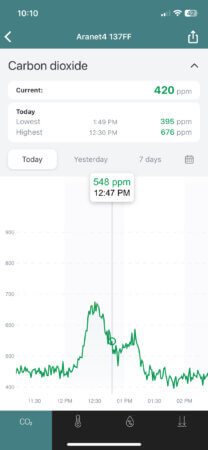
[Note that CO2 didn’t rise as fast for my second round. I’ve seen this happen before and believe it’s that my respiration is simply that much less – perhaps I’m just more relaxed from my first round).]
CO2 peaked at about 680 ppm with the blower exhausting 11 l/s (23 cfm) which is comfortable.
Blower speed is controlled by a rotary knob and I’ve measured actual exhaust rates so we can adjust it for the number of bathers. This provides for a CO2 level below ≈700 ppm without excessive ventilation that would waste energy.
One drawback is that higher exhaust rates for more people result in steam being exhausted faster so we’ll sometimes cheat the exhaust rate down a bit and allow for slightly higher CO2 in order to have a slightly longer ‘Germanic’ steam if we want.
Accumulated CO2: CO2 often does not decline back to its base level between rounds so your second and subsequent rounds then begin with a higher level and thus the potential for a greater amount of CO2.
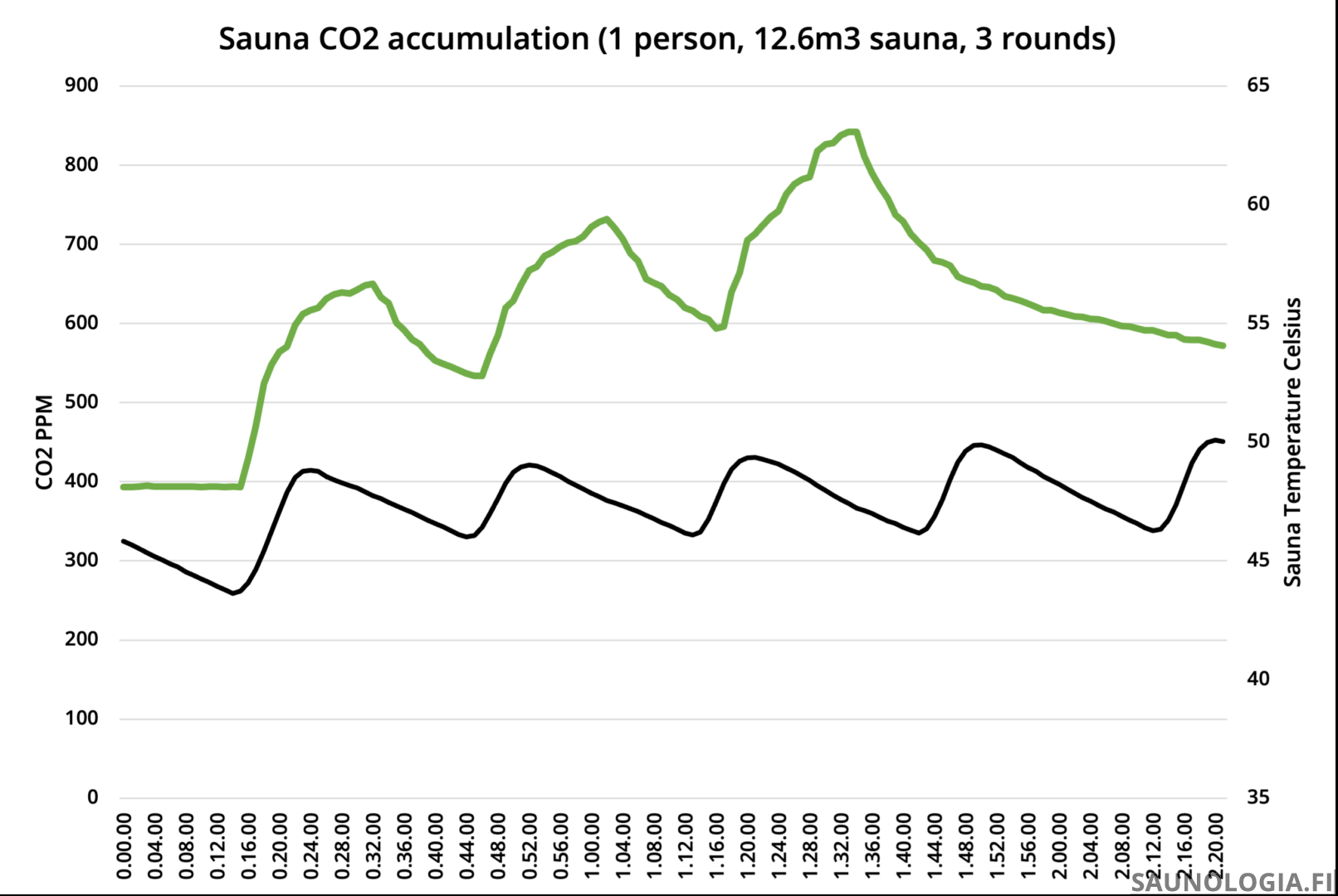
Good ventilation can significantly lessen this.
Also, as we saw above, some people will sometimes produce less CO2 in rounds beyond the first. In this case CO2 levels might even be less in subsequent rounds.
In this second example, two friends (Christopher ‘Risto’ Rice from ‘The Upper Bench Podcast’ and his wife Julie) and I did two rounds in our sauna with mechanical downdraft ventilation resulting in about 750-800 ppm for each round. Again we appear to be producing less CO2 during our second round.
The third bump up to 700 ppm is me in my car driving to our second sauna of the day.
We three along with four others then did three rounds in a sauna with less effective ventilation. (I had to remove my meter early in the third round to keep it from overheating and thus the truncated reading for that round.) We all sauna frequently and typically spend about 15-20 minutes in the sauna each round but here, even with a lower temperature, we stayed for only about 11 minutes.
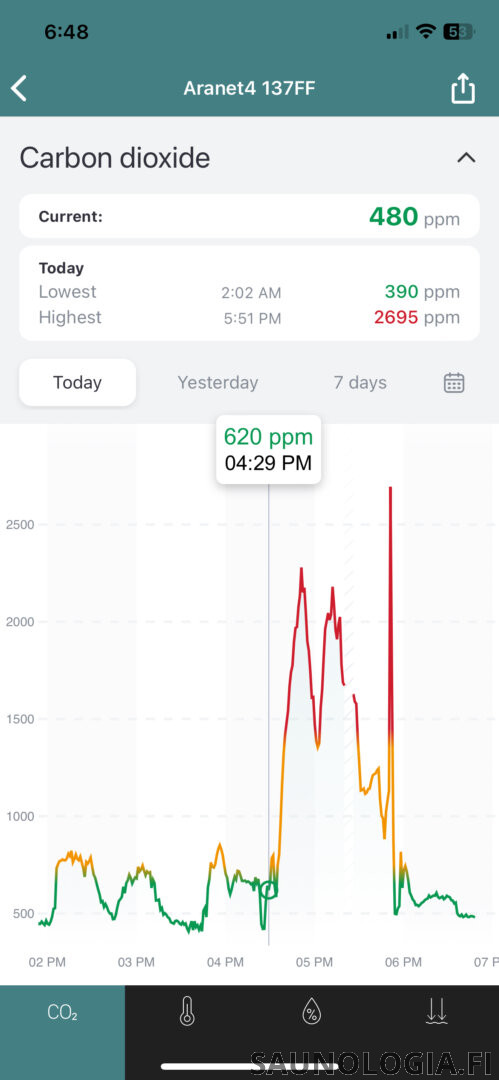
Huge thanks from the behalf of Saunologia for Walker for sharing these interesting insights! To my understanding, this is the first ever publication regarding carbon dioxide in sauna and definitely a step to the right direction.
